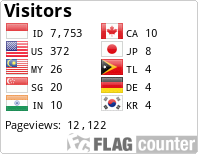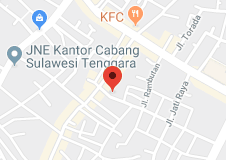UJI DAYA HAMBAT EKSTRAK DAUN NILAM (Pogostemon cablin Benth.) TERHADAP PERTUMBUHAN BAKTERI Escherichia coli
DOI:
https://doi.org/10.46356/jakk.v3i2.109Abstract
ABSTRACT
Patchouli (Pogostemon cablin Benth.) Is a plant that is widely known by the public. Patchouli plants are widely planted for oil. Patchouli oil is much needed for the cosmetic, perfume, antiseptic, and others industries. Patchouli leaves (Pogostemon cablin Benth.) Contain essential oils, flavonoids, saponins, tannins, glycosides, terpenoids and steroids. Alcohol content such as patchouli alcohol and its derivatives, phenol and terpenoid groups in patchouli oil have antibacterial activity. All parts of this plant can also be used as a headache medication, and diarrhea medicine. The purpose of this study was to determine how much the inhibitory effect of patchouli leaves on the growth of Escherichia coli bacteria.This type of research is an experiment consisting of six treatments with three repetitions. this research was conducted with RAL method (Complete Random Design). Patchouli leaf extract was obtained from maceration. The inhibitory test of patchouli leaf extract using Agar well method.The results obtained 3 times the lowest concentration treatment at 30% with an average (mean) of 1.83 mm, then with a concentration of 40% with an average (mean) of 2.26 mm and at a concentration of 50% with an average (mean) that is 3.43 mm is in the medium category, while there are 2 positive controls, tetracycline and flanked by tetracycline with an average (mean) of 4.5 mm and a flap does not produce an inhibitory zone and also a negative control (NaCl 0, 9%) does not produce an inhibitory zone.
Keywords: patchouli leaf extract, inhibitory power, Escherichia coli
ABSTRAK
Nilam (Pogostemon cablin Benth.) merupakan tanaman yang sudah banyak dikenal oleh masyarakat luas Tanaman nilam banyak ditanam untuk diambil minyaknya. Minyak nilam banyak dibutuhkan untuk industri kosmetik, parfum, antiseptik, dan lain-lain.Daun nilam (Pogostemon cablin Benth.) memiliki kandungan minyak atsiri, flavonoid, saponin, tanin, glikosida, terpenoid dan steroid. Kandungan alkohol seperti patchouli alcohol beserta turunannya, fenol dan golongan terpenoid pada minyak nilam memiliki aktivitas antibakteri. Semua bagian dari tumbuhan ini juga dapat dimanfaatkan sebagai obat sakit kepala, dan obat diare.Tujuan penelitian ini adalah untuk mengetahui seberapa besar daya hambat daun nilam terhadap pertumbuhan bakteri Escherichia coli. Jenis penelitian ini adalah eksperimen yang terdiri atas enam perlakuan dengan tiga kali pengulangan. penelitian ini dilakukan dengan metode RAL (Rancangan Acak Lengkap). Ekstrak daun nilam diperoleh dari hasil maserasi. Uji daya hambat ekstrak daun nilam menggunakan metode sumuran Agar.Hasil penelitian diperoleh 3 kali perlakuan konsentrasi terendah pada 30% dengan rata-rata (mean) yaitu 1,83 mm, kemudian dengan konsentrasi 40% dengan rata-rata (mean) yaitu 2,26 mm dan pada konsentrasi 50% dengan rata-rata (mean) yaitu 3,43 mm termasuk dalam kategori sedang, sedangkan kontrol positif ada 2 yaitu tetrasiklin dan diapet dimana tetrasiklin dengan rata-rata (mean) yaitu 4,5 mm dan diapet tidak menghasilkan zona hambatdan juga control negatif (NaCl 0,9%) tidak menghasilkan zona hambat.
Kata Kunci : Ekstrak daun nilam, daya hambat, Escherichia coli
Additional Files
Published
Issue
Section
License
Authors who publish on JAKK can share their research in a number of ways. JAKK does not impose an embargo on published journals, meaning that researchers can access it openly after the article is published. Researchers who have subscribed to access to articles can also share.
JAKK already uses the Open Journal System (OJS) thereby enabling the final version of all published research articles to be placed in any digital archive immediately after publication. JAKK can automatically make feeds of open access articles available to any repository that wishes to receive them.
Authors who publish with this journal agree to the following terms:
* Authors retain copyright and grant the journal right of first publication, with licensed under a Creative Commons Attribution ShareAlike 4.0 International License (CC BY-SA 4.0) that allows others to share the work with an acknowledgement of the work's authorship and initial publication in this journal.
* Authors are able to enter into separate, additional contractual arrangements for the non-exclusive distribution of the journal's published version of the work (e.g., post it to an institutional repository or publish it in a book), with an acknowledgement of its initial publication in this journal.
* Authors are permitted and encouraged to post their work online (e.g., in institutional repositories or on their website) prior to and during the submission process, as it can lead to productive exchanges, as well as earlier and greater citation of published work.







2.jpg)

